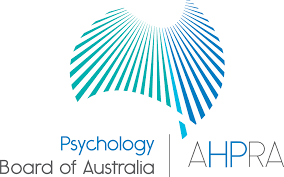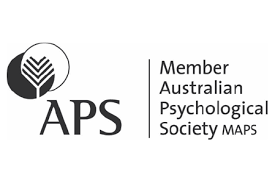Autism Assessments
Mind in Action is a psychology practice dedicated to supporting individuals with autism, recognizing that each person’s experience is unique. We specialize in helping children and adults understand their distinct minds through comprehensive assessments, creating tailored plans to harness their strengths and address challenges. Our autism assessments focus on sensory, social, communication, and cognitive needs, as well as any emotional, academic, or workplace difficulties that may arise.
Autism Parent, teacher and self questionnaires/rating scales
-
Standardized questionnaires and rating scales to assess behaviors, social interactions, sensory sensitivities, and communication patterns in children, for girls and masking, and adults.
-
Screening for autism-specific traits and co-occurring conditions (e.g., anxiety, ADHD, mood disorders, or learning difficulties) to ensure a comprehensive evaluation.
-
For adults, self-report tools are used to gather insights into personal experiences, including camouflaging behaviors often seen in autistic women and girls.
Comprehensive clinical history
- Formal tools such as the MIGDAS and ADI-R
- In-depth interviews with parents (for children), individuals, or caregivers to gather developmental, medical, and behavioral history
- Exploration of sensory sensitivities, social challenges, repetitive behaviors, and special interests to clarify the assessment direction.
- Ruling out medical issues that may mimic or contribute to symptoms, such as sensory processing disorders, sleep issues, or other health conditions.
Clinical observation
-
Structured and unstructured observations to assess autism-specific behaviors, communication, and social interactions in a clinical setting.
-
Use of standardized observational tools, such as:
-
Autism Diagnostic Observation Schedule (ADOS-2): A semi-structured, play-based assessment to evaluate social interaction, communication, play, and repetitive behaviors. Tailored modules are selected based on age and language ability, suitable for children and adults.
-
Monteiro Interview Guidelines for Diagnosing the Autism Spectrum (MIGDAS-2): A qualitative, sensory-based interview and observation process to assess autism characteristics, focusing on sensory preferences, social communication, and individual strengths. This tool is particularly effective for children and adults with diverse presentations.
-
-
Observations focus on naturalistic interactions, sensory responses, and patterns of behaviour to complement questionnaire and interview data.
Neuropsychological testing
-
Targeted assessments of cognitive and functional domains commonly affected in autism, including:
-
Social cognition: Understanding social cues, theory of mind, and emotional regulation.
-
Executive functioning: Planning, organization, cognitive flexibility, and self-monitoring (assessed for individuals over 8 years old).
-
Sensory processing: Evaluating sensory sensitivities or seeking behaviors.
-
Communication skills: Assessing verbal and non-verbal communication, including pragmatic language.
-
General intellectual functioning: Measuring reasoning, processing speed, and working memory to identify strengths and challenges.
-
-
If sensory, auditory, or visual processing issues are suspected, these are assessed to provide a complete profile.
-
assessments may also include vocational skills and adaptive functioning to support school, workplace or independent living needs.
Academic and Learning Disability Assessment
-
Evaluation of academic performance to identify co-occurring learning difficulties, such as dyslexia or challenges with written expression, which are common in autistic individuals.
-
For adults, assessments may focus on functional literacy, time management, or workplace-related cognitive demands
Feedback and recommendations
- A detailed feedback session explaining the individual’s strengths, challenges, and any appropriate diagnoses.
- A personalized plan for the future, including strategies for home, school, or workplace, as well as referrals to specialists (e.g., occupational therapists, speech therapists, or psychiatrists).
- Guidance on accommodations, such as sensory-friendly environments, structured routines, or communication aids.
- Recommendations may include non-medical interventions (e.g., sensory integration techniques, social skills strategies, or executive functioning support) and, if relevant, objective guidance on medication for co-occurring conditions like anxiety or ADHD.
Pre assessment:
We provide intake forms and questionnaires to gather background information about behaviors, sensory needs, and challenges, completed before the first visit to guide the assessment.
Initial session:
-
A consultation with parents (for children), the individual, or caregivers to discuss concerns and determine the assessment’s focus.
-
For adults, this session explores personal goals, such as workplace challenges or social difficulties.
-
Telehealth options are available for convenience.
Testing sessions:
-
Assessments are customized based on the individual’s needs, identified through pre-assessment questionnaires, interviews, and clinical observations.
-
Testing typically occurs over one or two sessions, lasting 2–4 hours each, depending on age and complexity. For children, sessions may require a half-day absence from school.
-
Parents or caregivers are only needed for drop-off and pick-up, while adults attend independently.
Feedback session:
-
A detailed feedback session explaining the individual’s strengths, challenges, and any appropriate diagnoses.
-
A personalized plan for the future, including strategies for home, school, or workplace, as well as referrals to specialists (e.g., occupational therapists, speech therapists, or psychiatrists).
-
Guidance on accommodations, such as sensory-friendly environments, structured routines, or communication aids.
-
Recommendations may include non-medical interventions (e.g., sensory integration techniques, social skills strategies, or executive functioning support) and, if relevant, objective guidance on medication for co-occurring conditions like anxiety or ADHD.
Children with ADHD often have trouble controlling their attention when they need to. They may be the dreamer who gets lost in thoughts and finds it hard to organise their world. They may be the active child who acts on impulse, or finds it difficult to sit still when something is boring or hard.
As you can see, ADHD is disorder that can look very different in different kids and there are also a number of medical, psychological and cognitive difficulties that look similar. So, despite it being quite a common neurodevelopment disorder, it can be a struggle for parents and teachers to work out what is going on. Getting an accurate diagnosis is therefore very important to rule out anything else going on and provide strategies and treatment that are tailored to your child.
Normally when we are doing tasks that we find boring or hard, the CEO of our brain can help us to keep motivated in “short term pain for long term gain”. However, when we are under stress our brain cannot talk to the CEO and we make short term decisions so that we stop feeling stressed. One of the best ways to stop this stress in the brain is to promote activities that release dopamine in the brain. Dopamine is a neurotransmitter and is the cause of intrinsic motivation. It is something that is released in the brain when we see or do something that we like.
Creating opportunities for children that are interesting, foster curiosity and are achievable challenges is the key. When a child with ADHD is interested or curious about something and feels they can achieve their goal then they are able to use their CEO and can accomplish a task well (you may see this when they are playing video games or completing an activity they enjoy). Then they are able to self-motivate and monitor.
It is, therefore, the responsibility of all who work with these children to a) at times be the CEO for them b) create experiences that foster curiosity, interest and achievable challenges in the child, so they can use their CEO easily c) help them to self-monitor and have insight into when they are having a stress response to something boring or hard and to implement strategies to help.
The two things that are most aligned with loss of concentration are:
1) Boredom due to a) mastery or b) low personal relevance
2) Frustration usually due to a) repeated failure or b) lack of understanding.
When we start to feel frustrated or bored, there is a reaction in the brain. This reaction makes it very difficult to think. Children with ADHD have a lower threshold to flip into this mental override mode and this often occurs with school work or tasks they don’t like. This is not the child being naughty but is actually an acute reaction to the stress they feel when bored or frustrated. It is an evolutionary brain function that is unfortunately causing trouble with tasks they need to get done.
Specifically, when we are learning something, our brain uses both emotion and attention “filters” to help decide whether the information we are getting is interesting/important or if it is in fact stressful/uninteresting. If it likes the information, it will usually pass it on to the “CEO of the brain” – the prefrontal cortex- that will allow us to use the information and decide what to do with it next. This is referred to as executive functioning and involves things such as planning, organisation, self-control etc.
When we are under stress or frustration or boredom something different happens. There is a kind of override when the emotion system is really active and it sees a threat. The problem is, while our brain is good at assessing and running away/hiding from threats such as lions and tigers and bears, it also assesses difficult or boring school work in the same way. So instead of the information going on to the CEO and allowing us to use it, our brain passes it on straight away to the “fight/flight” motor cortex instead and makes us want to get away from the situation rather than use goal-oriented behaviour. This happens to everyone but happens more frequently and with lower level stressors to those with ADHD. Again, this is not the child being naughty but is actually an evolutionary brain function that is just a little too switched on in these kids.
In this way, ADHD a disorder that affects self-control and self-motivation in children and adults by causing difficulty with attention and executive functioning (planning, organisation, impulse control) . It means that children have more difficulty accessing their CEO or “executive” of their brain that is supposed to help organise and control behaviour and help plan for the future. Instead, the brain is operating based on what is most pleasing, stimulating or interesting, in the moment. It also means that it is a lot harder to persist when things are difficult or “boring” because the brain of an ADHD child needs a lot more stimulation to allow it to talk to the CEO than in an average child without becoming distracted or getting stressed.
Normally when we are doing tasks that we find boring or hard, the CEO of our brain can help us to keep motivated in “short term pain for long term gain”. However, when we are under stress our brain cannot talk to the CEO and we make short term decisions so that we stop feeling stressed. One of the best ways to stop this stress in the brain is to promote activities that release dopamine in the brain. Dopamine is a neurotransmitter and is the cause of intrinsic motivation. It is something that is released in the brain when we see or do something that we like.
Creating opportunities for children that are interesting, foster curiosity and are achievable challenges is the key. When a child with ADHD is interested or curious about something and feels they can achieve their goal then they are able to use their CEO and can accomplish a task well (you may see this when they are playing video games or completing an activity they enjoy). Then they are able to self-motivate and monitor.
It is, therefore, the responsibility of all who work with these children to a) at times be the CEO for them b) create experiences that foster curiosity, interest and achievable challenges in the child, so they can use their CEO easily c) help them to self-monitor and have insight into when they are having a stress response to something boring or hard and to implement strategies to help.

Tania Pickering has been conducting assessments and helping families with strategies and treatment for ADHD for many years. She has a masters in Clinical Neuropsychology and as such has the comprehensive training necessary to provide in depth assessment and ongoing support for your child. She provides a wholistic approach to assessment, taking into consideration the person in context with their life as well as in the testing environment. This means looking at the cognitive, psychological, lifestyle and social aspects of the person on an individual level. The main aim of the assessments apart from diagnosis is to help create an effective plan for the future. To help parents get the information and resources they need to help kids thrive no matter their quirks. We also work with the child’s school to make sure the information and support is continued here. There will always be an action plan for home and school provided as well as any professional referrals given. She conducts assessments on the northern beaches and North shore or Sydney Australia


